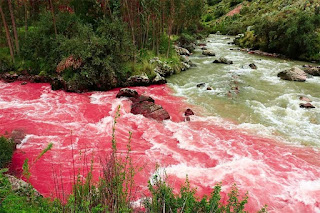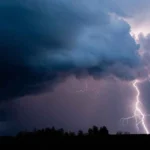
The Red River of the South, or simply the Red River, is a major tributary of the Mississippi River that gets its name from the color of its watershed. The Red River rises in eastern New Mexico and flows through Texas and Louisiana before entering the Mississippi River via Old River prior to the mid-1900s when a flood control system was built. Today, the Red River flows into the Atchafalaya River, then into the Gulf of Mexico via the Atchafalaya Bay. The Red River is 1,360 miles long and drains an area of approximately 93,000 square miles.
In 1806 President Thomas Jefferson commissioned the Red River Expedition to allow for exploration up the Red River. This was intended to be an exploration of the new land acquired through the Louisiana Purchase.
In terms of Mississippi River waterways, President Thomas Jefferson thought the Red River was almost as interesting as the Missouri.
Lieutenant Zebulon Pike, who was sent to find the source of the Red River, accidentally turned down the Rio Grande and was met by Spanish soldiers who sent him home.
Captain Henry Miller Shreve was the first to bring a steamboat up the Red River in 1815.
In 1839, Captain Henry Miller Shreve was responsible for starting to clear the 160-mile log jam along the Red River. The ‘Great Raft’ was the name given to this log jam.
The log jam was finally cleared in the 1870s, thanks to the availability of dynamite.
During the American Civil War, a Union General used the Red River as a transportation route for a river fleet. A Confederate force met and defeated the fleet along the route. The Red River Campaign (March 10th to May 22nd, 1864) was a failure, and the Confederates were able to hold their ground until the war ended.
Native Americans lived in the Red River region before it was settled in the 1800s. The land was suitable for crop cultivation, and there was excellent fishing and hunting.
For roughly half of its length, the Red River forms the Texas-Oklahoma border.
The Kiamichi River, Little Red River, Little River, Black River, Pease River, Sulphur River, Prairie Dog Town Fork Red River, Little Wichita River, Washita River, and North Fork of the Red River are the main tributaries to the Red River.
Due to weather and water levels, the lowest section of the Red River is the most frequently used by traffic.
The average flow rate at the mouth of the Red River is more than 57,000 cubic feet per second.
The Jimmie Davis Bridge on Highway 511 connects Shreveport and Bossier City by crossing the Red River. It was named after Louisiana Governor Jimmie Davis.
The Denison Dam, built along the Red River in 1943, created Lake Texoma north of Dallas, Texas. This reservoir covers an area of 89,000 acres.
The most recent flood occurred in 2015, when the Red River rose and flooded parts of Shreveport, Louisiana.









